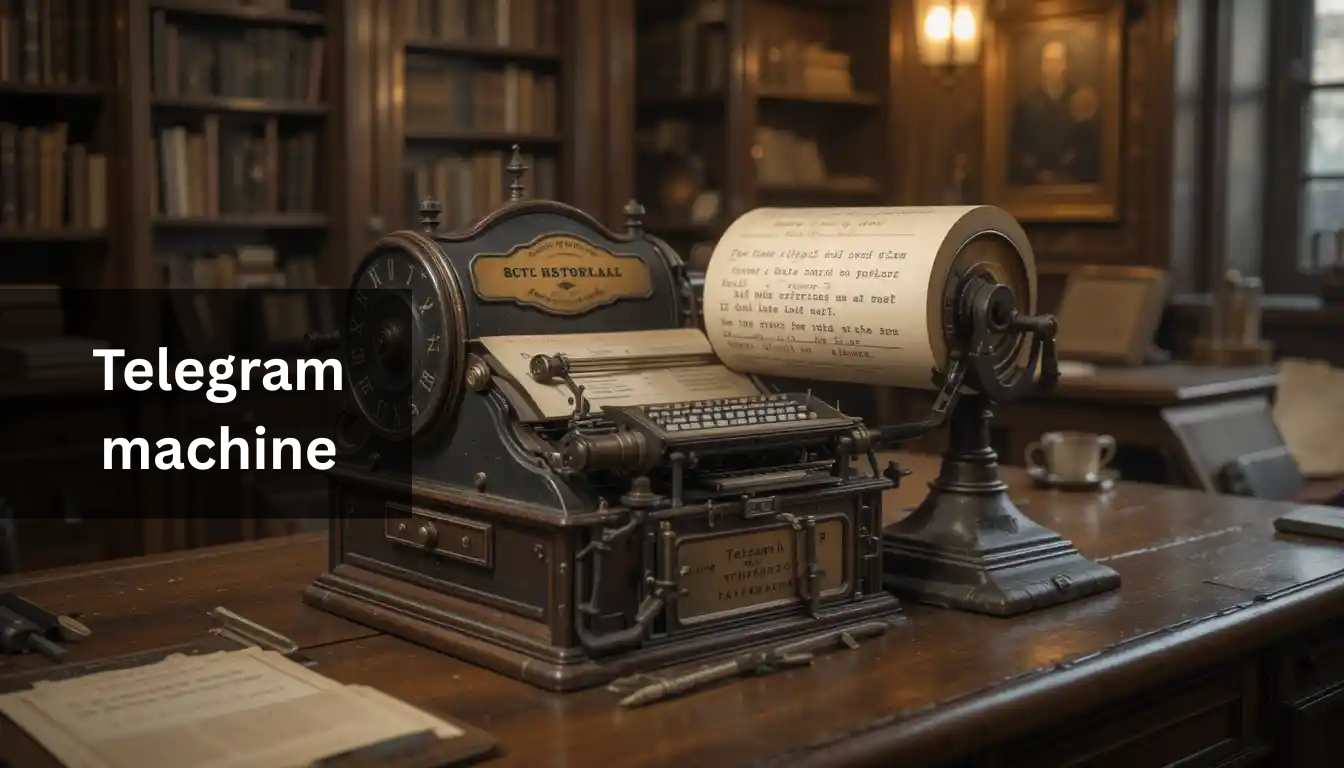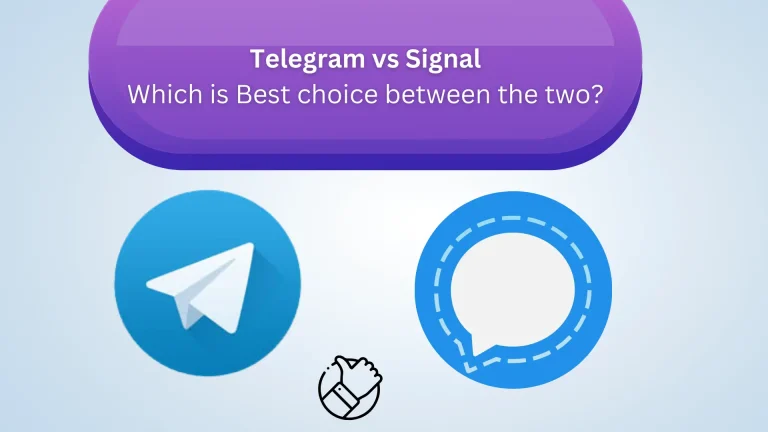Understanding the Telegram Machine: History and Impact
The invention of the telegram machine revolutionized communication, shrinking distances and allowing people to send messages across great lengths in mere minutes. This technological marvel had a profound impact on industries, society, and the world at large. Whether you are a history enthusiast or simply curious about this pivotal moment in communication history, this article takes you on a journey through the telegraph’s inception, its workings, and its lasting influence.
In this blog post, we’ll answer key questions such as “What is a telegram in history?” and “How does the telegraph work step by step?” We’ll also explore how the telegraph machine improved industry, its impact on society, and much more.

What Is a Telegram Machine?
A telegram machine, often referred to as a telegraph machine, is a device used to send and receive messages across long distances using electrical signals. Before the invention of the telephone and modern communication technologies, telegraphs were the primary method for quick communication, especially for businesses, government institutions, and military operations.
The old telegram machine worked by converting text into electrical pulses that could be transmitted via wires to a distant receiver, where the message would be decoded. These machines were bulky and required skilled operators, but they were a huge leap forward compared to the slow methods of communication used previously, such as postal services.
The telegram machine price varied, but in its time, it was an essential tool for businesses and governments, who could not afford to miss out on this revolutionary technology.
History of the Telegram Machine
When Was the Telegraph Invented by Samuel Morse?
The invention of the telegraph is credited to Samuel Morse, an American inventor, in the early 19th century. In 1844, he demonstrated the first successful use of his telegraph machine. His invention paved the way for the modern communication system by allowing long-distance transmission of messages through electrical signals. The telegraph machine allowed for the transmission of coded messages over great distances with speed and efficiency, a breakthrough that was previously unthinkable.
Samuel Morse’s invention fundamentally altered how people interacted with the world. Messages that would have taken weeks to deliver by horse or ship were now reaching their destination in a matter of minutes or hours, depending on the distance. This was especially valuable for businesses and governments, who now had the power to communicate instantly across vast stretches of land.
What Is a Telegram in History?
A telegram in history refers to the messages sent using the telegraph machine. These messages were generally short and to the point, as they were sent through electrical impulses over long distances, often using Morse code. A typical telegram would include crucial information such as a message, the recipient’s name, and often the sender’s name, followed by the location of the sender and recipient.
Telegram services were crucial during wartime, business dealings, and political decisions. Notably, the telegram machine played a vital role during the American Civil War, World War I, and World War II, where it was used to send critical military communications.
How Does the Telegraph Work Step by Step?
Step 1: The Operator Types the Message
In the early days, an operator would type the message using a telegraph machine that was connected to a wire. The machine used Morse code—a system of dots and dashes representing letters and numbers—to encode the message into electrical impulses.
Step 2: The Message is Transmitted via Wires
The electrical impulses, or signals, are then sent through a wire to the telegraph office in the destination city. This process uses electrical power to send the signals over vast distances, often using copper wires or even underwater cables for longer distances.
Step 3: The Message is Received
At the destination, another operator receives the signals using a second telegram machine. The machine translates the Morse code signals back into letters and words, which the operator then types out on paper for the recipient.
Step 4: Delivery of the Message
Once the message has been decoded, it is delivered to the intended recipient, often in the form of a printed message or as a slip of paper with the decoded text.
How Does the Telegraph Impact Society?
The telegraph machine had a profound impact on society. It allowed for the instant transmission of messages, which had never been possible before. Prior to the telegraph, communication over long distances was slow, often taking days or weeks. The advent of the telegram machine made it possible to exchange information quickly and efficiently.
Speed and Efficiency
The speed of communication was significantly improved. Whether it was for military commands, stock market updates, or political news, the telegram was invaluable. News traveled faster than ever before, and society adapted to the new pace of life.
Economic Growth
The telegraph played an essential role in the growth of industry. Business transactions could be conducted more efficiently, and stock markets flourished as they could exchange information faster than ever. Railway systems, which relied on quick communication for scheduling and safety, also benefited greatly from the telegraph.
Social Impact
The telegraph machine made the world feel smaller. People could communicate with loved ones who were far away, and news from distant places could be delivered almost instantly. It also played a major role in diplomacy, with world leaders exchanging messages more frequently and with greater speed.
How Did the Telegraph Improve Industry?
The telegram machine brought substantial improvements to various industries, especially in transportation and communication sectors.
Impact on Railways
One of the industries most positively impacted by the telegraph was railways. Before the advent of the telegraph, communication between stations was limited, leading to inefficiency and delays. However, with the introduction of telegrams, train schedules could be coordinated across vast networks, reducing the risk of accidents and making the transportation of goods and passengers more efficient.
Facilitating Business Transactions
Telegraphs also helped streamline business transactions. By allowing companies to communicate instantly with partners, suppliers, and customers, the telegraph improved business operations. Companies could place orders, check on deliveries, or adjust contracts in real time, which sped up processes and improved overall productivity.
Facilitating International Trade
The ability to send a telegram across continents also helped expand international trade. Countries could communicate about tariffs, imports, and exports almost instantly. This made global trade more efficient and allowed businesses to make decisions quickly, which was essential during the 19th and early 20th centuries.
Best Telegram Machine: What to Look For?
In today’s world, telegram machines are no longer in regular use. However, old telegram machines can still be found in museums or through vintage electronics collectors. If you’re an enthusiast looking to purchase one, you may want to focus on the best telegram machine that best represents this significant piece of history.

Some features to consider when purchasing a vintage telegram machine include:
- Condition of the Machine: Look for machines that are in good working condition. Many old telegram machines have been maintained well but check if they are still functional.
- Brand and Model: Some brands and models are more highly regarded by collectors. For instance, the Western Union machines are known for their quality.
- Price: The telegram machine price can vary based on its age, condition, and rarity. Some old telegram machines can be quite expensive, especially if they are rare or have historical significance.
If you’re lucky enough to find a telegram machine in working condition, it could be a prized possession for your collection or a fascinating addition to your study of communication technology.
FAQ
What is a telegram machine?
A telegram machine is a device used to send and receive messages over long distances by converting text into electrical signals. It played a key role in early communication before modern technologies like telephones and emails.
How does the telegraph work step by step?
The telegraph works by converting a message into Morse code. The operator types the message, which is transmitted as electrical impulses through wires. The receiving machine decodes these signals and prints the message for the recipient.
Who invented the telegraph in 1844?
The telegraph was invented by Samuel Morse in 1844. His invention allowed for the transmission of messages over long distances using electrical signals, revolutionizing communication.
What is the significance of the telegram in history?
The telegram played a crucial role in transforming global communication, allowing for faster transmission of messages, particularly in business, government, and military settings. It drastically reduced the time it took to send information across distances.
When was the telegraph invented by Samuel Morse?
Samuel Morse invented the telegraph in 1837, but it was in 1844 that he successfully demonstrated its use with the famous message, “What hath God wrought?” signaling the birth of instant long-distance communication.
How did the telegraph impact society?
The telegraph drastically changed society by enabling instant communication over long distances. It facilitated faster business transactions, improved news delivery, and even played a role in military and diplomatic decisions.
How did the telegraph improve industry?
The telegraph improved industries by enabling faster communication between businesses, governments, and transportation networks. It enhanced the efficiency of trade, coordinated operations in railways, and helped streamline financial markets.
What is Morse code?
Morse code is a system of dots and dashes that represent letters, numbers, and punctuation marks. It was used in telegraphs to transmit messages over long distances before the advent of modern communication methods.
What is the difference between a telegram and a phone call?
A telegram is a written message sent via a telegraph machine, while a phone call is a real-time voice conversation. Telegrams were typically used for quick, formal messages, whereas phone calls allow for interactive conversations.
Can I still buy an old telegram machine?
Old telegram machines are rare but can still be found in collector markets, antique shops, or online auction platforms. Many enthusiasts and museums preserve these machines for their historical significance.
Conclusion:
The telegram machine may no longer be a daily tool in modern society, but its impact on communication, society, and industry is undeniable. From Samuel Morse’s groundbreaking invention in 1844 to its widespread use across the world, the telegraph revolutionized how humans connected with one another across vast distances.
Though telegraphs have been replaced by more modern technologies, the old telegram machine remains a testament to human ingenuity and progress. Whether you are a history buff, a tech enthusiast, or simply someone curious about the past, understanding the evolution of communication helps appreciate how far we’ve come in staying connected.
You May Also Like :






